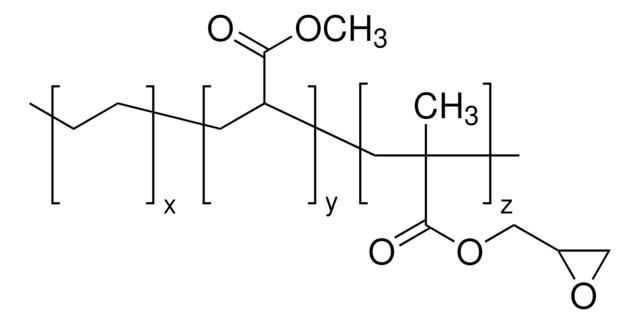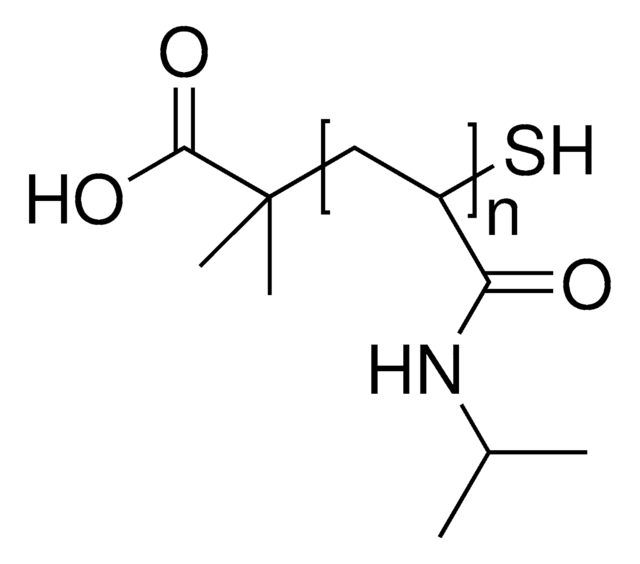724858
Poly(N-Isopropylacrylamid-co-Methacrylsäure)
methacrylic acid 10 mol %, Mn 60,000
Synonym(e):
Poly-(NIPAM-co-MAA), Polyacrylamid, funktionalisiertes Polyacrylamid, funktionalisiertes polyNIPAM, polyNIPAM
About This Item
Empfohlene Produkte
Form
solid
Mol-Gew.
Mn 60,000
Zusammensetzung
methacrylic acid, 10 mol %
mp (Schmelzpunkt)
>300 °C
Mw/Mn
≤2.5
InChI
1S/C6H11NO.C4H6O2/c1-4-6(8)7-5(2)3;1-3(2)4(5)6/h4-5H,1H2,2-3H3,(H,7,8);1H2,2H3,(H,5,6)
InChIKey
BGJOTKHBFYMJST-UHFFFAOYSA-N
Suchen Sie nach ähnlichen Produkten? Aufrufen Leitfaden zum Produktvergleich
Verwandte Kategorien
Anwendung
Lagerklassenschlüssel
11 - Combustible Solids
WGK
WGK 3
Flammpunkt (°F)
Not applicable
Flammpunkt (°C)
Not applicable
Analysenzertifikate (COA)
Suchen Sie nach Analysenzertifikate (COA), indem Sie die Lot-/Chargennummer des Produkts eingeben. Lot- und Chargennummern sind auf dem Produktetikett hinter den Wörtern ‘Lot’ oder ‘Batch’ (Lot oder Charge) zu finden.
Besitzen Sie dieses Produkt bereits?
In der Dokumentenbibliothek finden Sie die Dokumentation zu den Produkten, die Sie kürzlich erworben haben.
Artikel
Poly(N-isopropylacrylamide), or PNIPAM, is a stimuli-responsive polymer that responds to changes in pH and temperature and has a LCST around 32 C.
Tissue engineering has become a key therapeutic tool in the treatment of damaged or diseased organs and tissues, such as blood vessels and urinary bladders.
By altering the physicochemical properties, smart or intelligent drug delivery systems can be designed to deliver therapeutic molecules on-demand. Learn more about the application of stimuli-responsive materials in drug delivery.
Professor Mitsuhiro Ebara provides insights on several types of smart nanofiber mesh systems that have been explored for different drug delivery purposes.
Unser Team von Wissenschaftlern verfügt über Erfahrung in allen Forschungsbereichen einschließlich Life Science, Materialwissenschaften, chemischer Synthese, Chromatographie, Analytik und vielen mehr..
Setzen Sie sich mit dem technischen Dienst in Verbindung.





